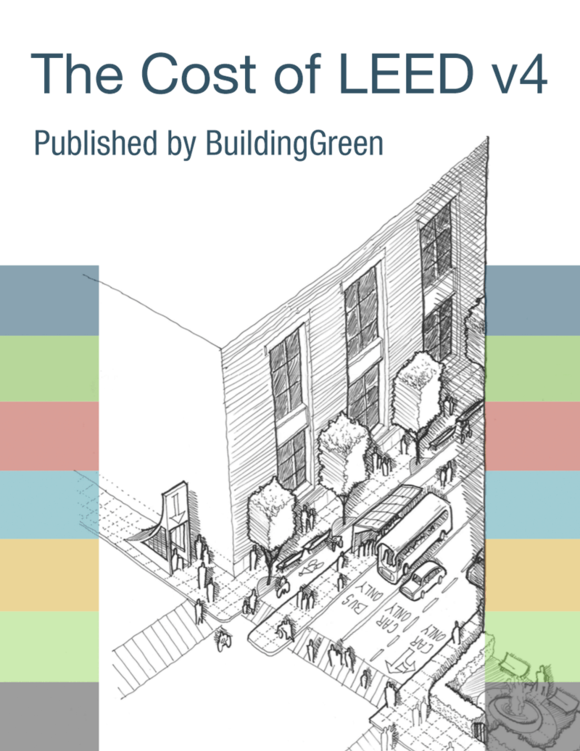LEEDuser’s viewpoint
Explore this LEED credit
Post your questions on this credit in the forum, and click on the credit language tab to review to the LEED requirements.
Credit language

© Copyright U.S. Green Building Council, Inc. All rights reserved.
Requirements
All LEED projects must meet the size requirements listed below.
LEED BD+C and O+M: Existing Buildings Rating Systems
The LEED project must include a minimum of 1,000 square feet (93 square meters) of gross floor area.
LEED ID+C and O+M: Interiors Rating Systems
The LEED project must include a minimum of 250 square feet (22 square meters) of gross floor area.
LEED Neighborhood Development Rating Systems
The LEED project should contain at least two habitable buildings and be no larger than 1500 acres.
LEED Residential Single Family Homes Rating System
The LEED project must be defined as a “dwelling unit” by all applicable codes. This requirement includes, but is not limited to, the International Residential Code stipulation that a dwelling unit must include “permanent provisions for living, sleeping, eating, cooking, and sanitation.”
LEED for Cities and Communities: Existing and LEED for Cities and Communities: Plan and Design
This MPR is not applicable to these rating systems.
See all forum discussions about this credit »
What does it cost?
Cost estimates for this credit
On each BD+C v4 credit, LEEDuser offers the wisdom of a team of architects, engineers, cost estimators, and LEED experts with hundreds of LEED projects between then. They analyzed the sustainable design strategies associated with each LEED credit, but also to assign actual costs to those strategies.
Our tab contains overall cost guidance, notes on what “soft costs” to expect, and a strategy-by-strategy breakdown of what to consider and what it might cost, in percentage premiums, actual costs, or both.
This information is also available in a full PDF download in The Cost of LEED v4 report.
Learn more about The Cost of LEED v4 »Frequently asked questions
See all forum discussions about this credit »Documentation toolkit
The motherlode of cheat sheets
LEEDuser’s Documentation Toolkit is loaded with calculators to help assess credit compliance, tracking spreadsheets for materials, sample templates to help guide your narratives and LEED Online submissions, and examples of actual submissions from certified LEED projects for you to check your work against. To get your plaque, start with the right toolkit.

© Copyright U.S. Green Building Council, Inc. All rights reserved.
Requirements
All LEED projects must meet the size requirements listed below.
LEED BD+C and O+M: Existing Buildings Rating Systems
The LEED project must include a minimum of 1,000 square feet (93 square meters) of gross floor area.
LEED ID+C and O+M: Interiors Rating Systems
The LEED project must include a minimum of 250 square feet (22 square meters) of gross floor area.
LEED Neighborhood Development Rating Systems
The LEED project should contain at least two habitable buildings and be no larger than 1500 acres.
LEED Residential Single Family Homes Rating System
The LEED project must be defined as a “dwelling unit” by all applicable codes. This requirement includes, but is not limited to, the International Residential Code stipulation that a dwelling unit must include “permanent provisions for living, sleeping, eating, cooking, and sanitation.”
LEED for Cities and Communities: Existing and LEED for Cities and Communities: Plan and Design
This MPR is not applicable to these rating systems.

